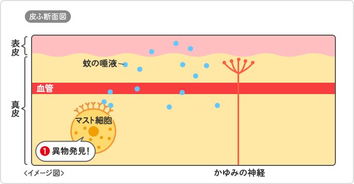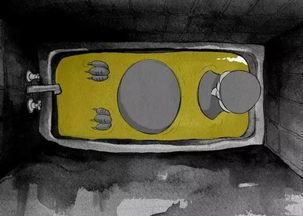
Insect Bite Reaction: A Comprehensive Guide
Have you ever experienced an insect bite and wondered what the reaction might be? Insect bites can range from mild to severe, and understanding the different types of reactions can help you manage them effectively. This article will delve into the various aspects of insect bite reactions, including common symptoms, causes, treatment, and prevention methods.
Common Symptoms of Insect Bite Reactions

When an insect bites you, it injects its saliva into your skin, which can trigger an immune response. Common symptoms of an insect bite reaction include:
-
Pain or itching at the bite site
-
Redness and swelling
-
Bruising
-
Small, pus-filled blisters
-
Wheals or hives
In some cases, the symptoms may be more severe, leading to allergic reactions or infections.
Causes of Insect Bite Reactions

Insect bite reactions can be caused by various types of insects, including:
-
Bees and wasps
-
Ants
-
Spiders
-
ticks
-
mosquitoes
Each insect has its own venom, which can cause different reactions in humans.
Treatment for Insect Bite Reactions

Most insect bite reactions are mild and can be treated at home. Here are some common treatment methods:
-
Cool the bite site with ice or a cold compress to reduce swelling and pain.
-
Apply a hydrocortisone cream to reduce itching and inflammation.
-
Keep the bite site clean and dry to prevent infection.
-
Take an antihistamine to relieve itching and swelling.
However, if you experience any of the following symptoms, seek medical attention immediately:
-
Severe swelling or redness
-
Difficulty breathing
-
Severe pain or throbbing at the bite site
-
Fever or chills
-
Confusion or dizziness
Prevention Methods
Preventing insect bites is the best way to avoid reactions. Here are some tips to help you stay safe:
-
Wear long sleeves and pants when outdoors, especially in areas with high insect populations.
-
Use insect repellent containing DEET, picaridin, or oil of lemon eucalyptus.
-
Keep your home and yard free of standing water, which can attract mosquitoes.
-
Seal gaps and cracks around your home to prevent insects from entering.
-
Remove any food sources that might attract ants or other insects.
Table: Common Insects and Their Venoms
| Insect | Venom | Common Symptoms |
|---|---|---|
| Bees and wasps | Phospholipase A2 | Pain, swelling, redness, itching, and hives |
| Ants | Formic acid | Pain, burning sensation, redness, and swelling |
| Spiders | Spider venom | Pain, swelling, redness, and in some cases, severe allergic reactions |
| Ticks | Saliva | Pain, swelling, redness
Related Postseight point star bit,Understanding the Eight Point Star Bit: A Comprehensive GuideUnderstanding the Eight Point … flush trim router bits,Understanding Flush Trim Router Bits: A Comprehensive GuideUnderstanding Flush Trim Route… Like |






